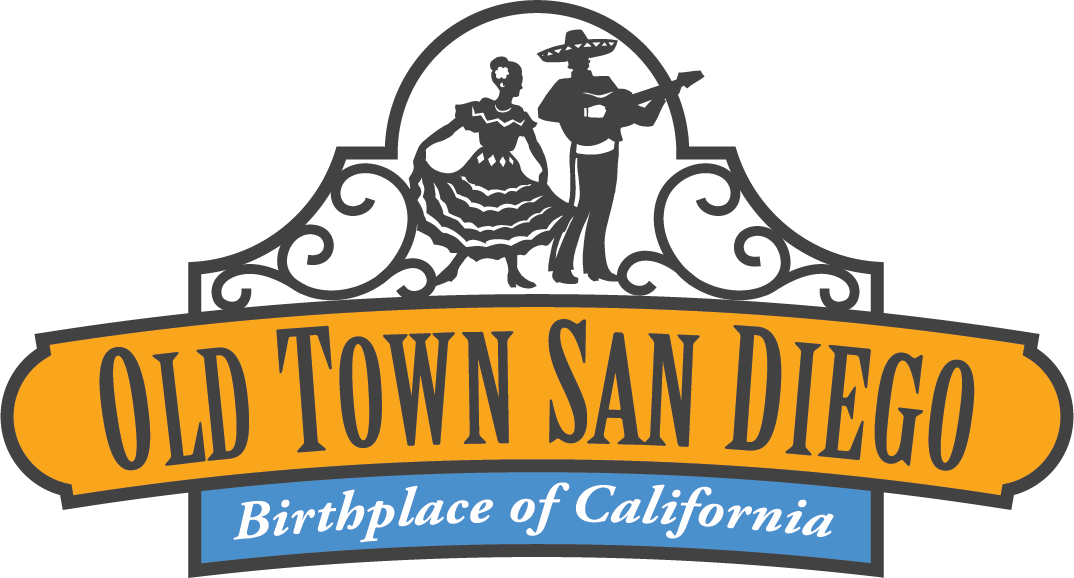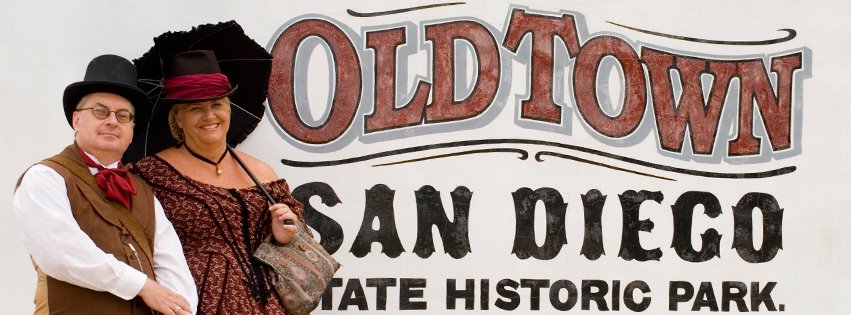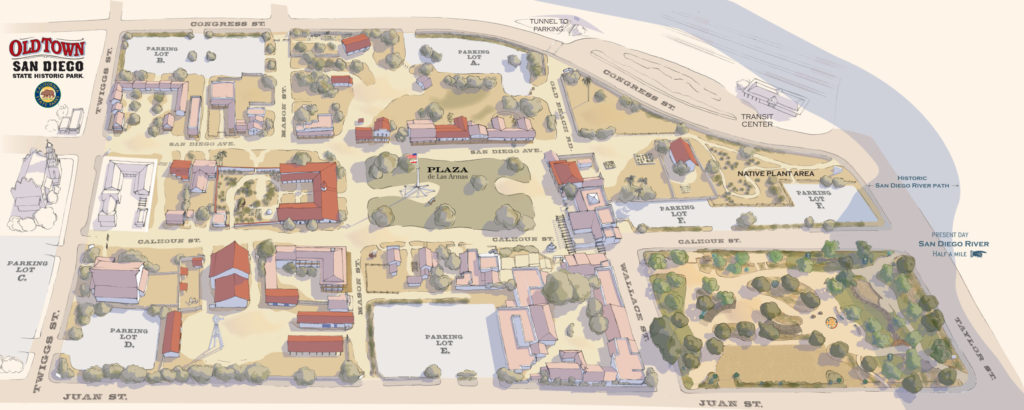Old Town San Diego State Historic Park presents the opportunity to experience the history of early San Diego by providing a connection to the past.
Learn about life in the Mexican and early American periods of 1821 to 1872. Even today, life moves more slowly in this part of San Diego, where the hustle and bustle is balanced with history and fiestas. Visitors are offered a glimpse into yesteryear, as converging cultures transformed San Diego from a Mexican pueblo to an American settlement. San Diego became California’s first Spanish settlement when a mission and fort were established here in 1769. Later, it passed into the hands of the newly made Mexican government before gaining statehood in the United States after the Mexican-American War.
The core of restored original historic buildings from the interpretive period are complemented by reconstructed sites, along with early twentieth century buildings designed in the same mode. Five original adobe buildings are part of the historic park, which include museums, unique retail shops, and several restaurants. The Historic Plaza remains a special place for gatherings and historic activities. Visitors can also experience a working blacksmith shop, enjoy music, see or touch the park’s burros, and engage in activities that represent early San Diego.
Website – www.parks.ca.gov/oldtownsandiego
Location/Directions
The park is located on San Diego Avenue and Twiggs Street in San Diego, and is conveniently adjacent to the Old Town Transit Center, with Coaster, Trolley, and MTS Bus service.
Historical Landmarks
Robinson-Rose House Visitor Information Center James Robinson came to San Diego from Texas in the Spring of 1850 and developed a successful law practice. He built this two-story structure in 1853 to serve not only as his family residence but also as the home of the San Diego Herald, the San Diego and Gila Railroad office, as well as other private offices. Robinson died in 1857 and his widow Sarah Robinson sold the building to Louis Rose, who probably purchased it as a family residence. Fire destroyed the roof in 1874 and the building fell into ruins by the turn of the century. The reconstructed building now serves as Old Town State Historic Park’s visitor center and has on display a model of Old Town as it looked in 1872, created by Joseph Toigo, a past resident of Old Town.
La Casa de Estudillo Mansion built around a garden courtyard.
La Casa de Machado y Stewart Full of artifacts that reflect ordinary life of the period.
Mason Street School California’s first public schoolhouse
La Casa de Machado y Silvas
Seeley Stables Museum Newly rehabilitated exhibits on overland transportation, houses one of the finest wagon and carriage collections.
La Casa de Estudillo
San Diego Union Printing Office Site of the city’s oldest surviving news paper office.
Wells Fargo Museum Museum Located in the Colorado House; banking museum, including an authentic 1868 Abbot-Downing Co. Stage Coach.
McCoy House Museum In March 2000, the California Department of Parks and Recreation (DPR) completed construction of the Old Town San Diego State Historic Park Entry Redevelopment project, which included extensive landscaping and reconstruction of the McCoy House. State Park archaeologists excavated in Old Town San Diego in 1995 to recover information needed to reconstruct a large residence built in 1869 by James McCoy, a well-to-do Irish immigrant who served as San Diego’s sheriff and state senator. Prior to 1851 the property belonged to Maria Eugenia Silvas, descendant of a Spanish Colonial soldier who came to Alta California in the 1770s.
Cosmopolitan Hotel & Restaurant With a long history spanning more than 175 years, The Cosmopolitan’s return to glory marks a significant moment for San Diego. The start of The Cosmopolitan’s history goes back to a man named Juan Lorenzo Bandini, one of San Diego’s pioneers who settled here in the 1800s. He constructed and designed his grand residence, the largest in Old Town at the time, between 1827 and 1829. The single-story home was built around False Bay, which became Mission Bay circa 1944. Bandini’s goal for the home was to make sure his wife and two daughters were most comfortable. The home had seven rooms, an entrance hall, an enclosed courtyard, a corral, and several sheds and barns. It was designed with Spanish Colonial architectural features such as thick adobe walls, muslin ceilings, pane-glass windows, and a brick-lined patio.


